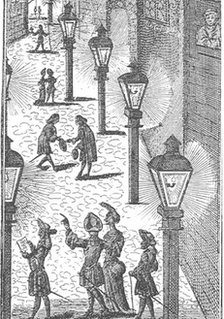Skarekrow
~~DEVIL~~
- MBTI
- Ni-INFJ-A
- Enneagram
- Warlock

"I am human"
Yes you are. I would be thinking that you are! Human as, when you look in the mirror, you are more than what meets the eye. We could almost say there are two "you". One s what you see in a mirror, a living biological human biological body, but there is “someone” inside of that body that laughs and cries and feels emotions. Even deeper still, this "ghost in the machine", or "flesh pilot", is an energy. You, when we dig down deep at this level, are an intelligent and divine energy. It is what is recognized, when we say "Namaste"! This is the "you" that I will be talking about.
This gets even more crazy. Matter, that is all that is physical comes from something called the Unified Field.
http://www.cosmometry.net/unified-field-and-quantum-field
In this realm of existence, everything is in pure abstract form. All possibilities exist in this realm. This is what quantum physics are trying to unveil today. From there we have the second stage. They call this the Quantum Field. This is where matter fizzes into our realm we call the Three Dimensional Universe. But wait. What is still even more weird is the fact that it "fizzes" into our universe as waves....until we look at it, where it finally becomes solid.
https://www.youtube.com/watch?v=fwXQjRBLwsQ
Crazy stuff isn't it? Your human body with all its atoms and electrons comes from this place as well. I am not about to get too much into the science end of things, but it is necessary to explain this, or the rest will not make too much sense.
The deep essence of you comes from the same place as all of our matter does! Well how is that possible? How can "I" be in the dimension of pure abstract and manifest here in the 3D universe at the same time unless.... we had...a vehicle to....transcend...the dimensions...like a...
Yes. Like a Merkabah!
Merkabah: Divine Chariot...Something to Ride in.
Wikipedia defines it like this: The noun merkabah "thing to ride in, cart" is derived from the consonantal root r-k-b with general meaning "to ride".
You guessed it. We all have our own Merkabah. We cannot see it anymore than we can see our "energy selves", yet we are most definitely here. Like-wise, your Merkabah surrounds you and is in motion at all times. The Merkabah is an energy that is in a way, alive. It is dynamic and its function or state depends on you. We will get into that at a later time.
So, summing this up... You, are an energy that exists primarily in another realm. It is the realm of All. It is the Unified Field, the Zero Point Field, Cosmic Consciousness, and there is a list other names for it. I like the term Base Dimension. It is the base of all that exists in the universe. There is no space, nor time in this dimension. Everything is together. So how would you learn or experience anything if you had nowhere to go and no time to do it? You couldn’t. It would be impossible. So what if the Third Dimension was created so that you CAN experience space and time. The problem is that your primary form of energy could not exist here in this universe. So let’s introduce the Divine Merkabah. Thanks to the Merkabah, you can “stay at home” in the Base Dimension and live out an entire life here in the Third Dimension so that you can learn, observe, and hopefully experience the objectives to your maximum and find a balance in all of this. It is the Merkabah that allows you to exist here as a Spiritual Entity so you can have a human experience. This is a two way street too. When you go into deep transcending meditation, you touch into a “super consciousness” or you touch the “one”. What you are feeling is the Realm of All, the Base Dimension, The Unified Field, and once you get there you realize that you are not alone. Everything exists there. Somewhere between conception and your birth, your tiny human body received a Divine Gift. You received a Divine and Intelligent Energy that in your childhood years would acquire a self recognition. You would associate your existence with your name. Some people will live their entire lives with this notion that they are Joe and Jane and that’s the end of the story. Some will go on to realize Joe and Jane is just the beginning of the story. Joe and Jane is the result of the love of parents that give these names to a Being that they created. The truth is that the parents role was creating the biological body, the Life Essence was already created and needed a biological body to manifest here. This Life Essence is really called “All of Us”, and we are a temporary expression of this Being for a limited time here on Earth, although this Being in its pure essence is eternal. “You”, your Consciousness never dies. Just your body does. This Being, like you and me, has the miraculous chance to manifest here in this universe, to live a lifetime as an individual...thanks to your Merkabah. No Merkabah, no bridge to span the dimensions, no “You”. The fact is....you ARE here. So let’s Love all things, all Sentient Beings, all forms of Life and learn what we need to know to grow into the wonderful Being that we all have the potential to do.
Last edited:





